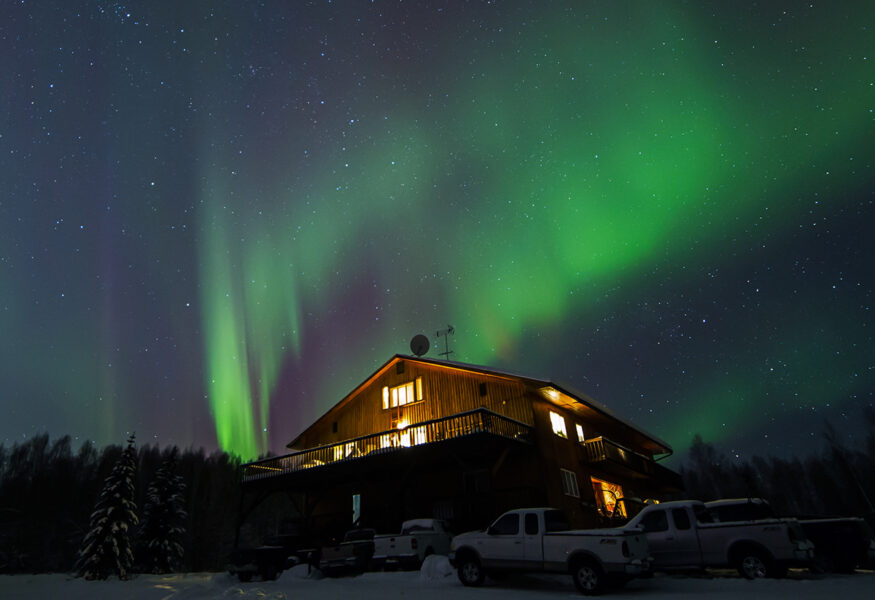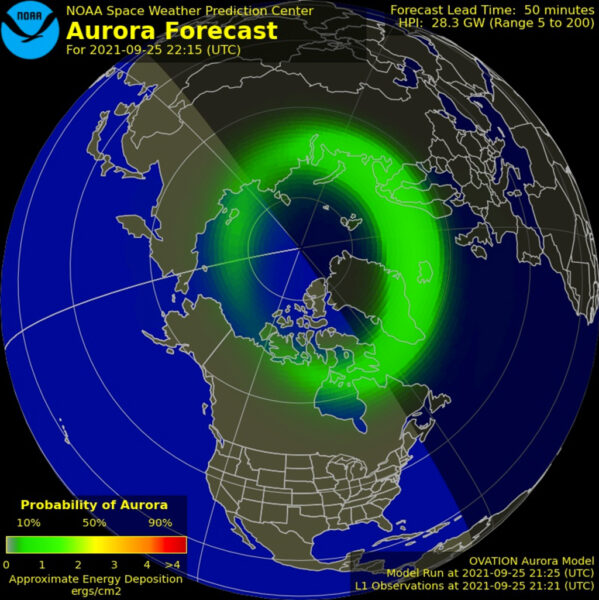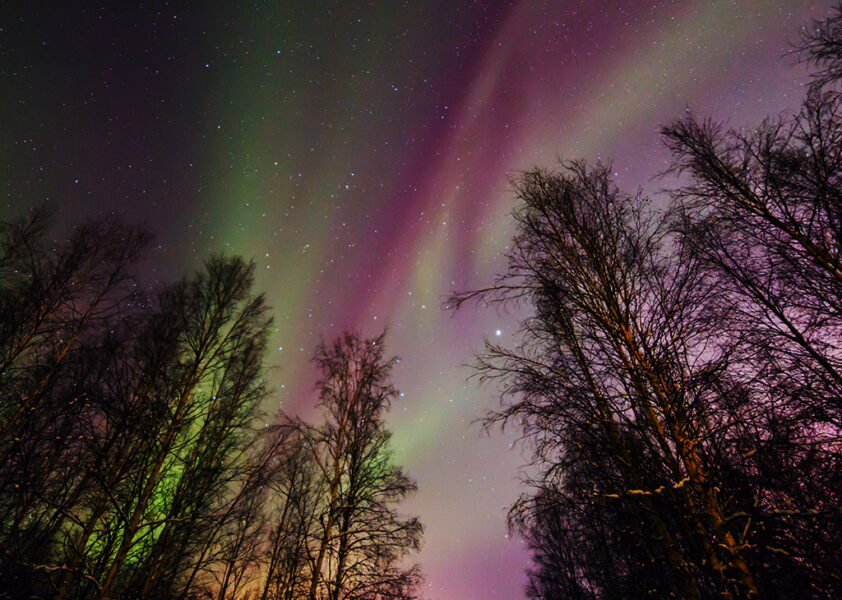Follow these tips to capture auroral displays.
As the Sun heads south for winter in the Northern Hemisphere, the nights grow longer and the opportunities to catch the northern lights, or aurora borealis, increase the further north you live or travel.
Aurorae occur when charged particles (mostly electrons and protons) in the solar wind sneak past Earth's magnetic shield and collide with atoms in the upper atmosphere. As the ionized oxygen and nitrogen molecules return to their "ground" state, they glow, much like a neon light does when electrical current runs through it. The results are awe-inspiring, and if you’ll forgive the metaphor, magical.
If you get a chance to see an auroral display, I highly recommend taking some time to just stand there and watch and let the experience wash over you. But then, of course, you're probably going to want to take some pictures.
Aurora Hunting
While on a family trip to Fairbanks, Alaska, a few years ago, I won the proverbial northern lights lottery. We were treated to an amazing outburst of activity on two nights at our snowy lodge. The lodge owner said people come from all over the world and stay for a week at a time, but still don’t catch an outbreak like this one. Beginner’s luck!

Richard S. Wright Jr.
Although the polar ring where aurora typically appear generally favors far-northern latitudes, international travel isn't required for U.S. citizens. Fairbanks is quite an accessible and affordable option for aurora seekers in the age of pandemic travel limitations. Of course, there are more exotic options, like trips to Iceland, Norway, or even aurora cruises in the North Atlantic.
The uppermost of the contiguous 48 states are occasionally treated to good auroral displays too. Canadian readers can make weekend trips to reach a little farther north when there is a good auroral forecast.

“Did you say forecast?”
Yes, solar weather is closely monitored and the Space Weather Prediction Center puts out alerts. You can also watch for updates at SpaceWeather.com or subscribe to their alert service for a small monthly fee.
The aurorae you see are about 80 to 500 kilometers up (50 to 300 miles) and can be seen from space as well. They are mostly green due to oxygen atoms, but really energetic displays can get nitrogen in on the act, glowing pink or red. Sometimes visible to the naked eye, these colors show up extremely well when photographed.
Aurora Photography Tips
Aurorae are straightforward to photograph, and many of the newer smart phones (when held steady) can capture stills or even video of the action. Check your smartphone to see if its camera includes a night mode that lets you record exposures of several seconds or more. Adding a tripod with a smartphone bracket and a Bluetooth shutter trigger will improve your results.
Fast Lenses Help
For just a bit higher quality, you might opt for a camera with a fast, wide-angle lens. Just like nightscape photography, the faster your lens is the better it is for the subject, and you only need about ISO 1600 during a typical display. On my Fairbanks excursion, I shot 8-second exposures at ISO 3200 using an f/4 lens. Often nightscapes on a tripod need at least f/2.8 or even better, but the northern lights can be pretty bright, so you can get away with a slower lens and just extend your exposures or increase your camera's ISO setting.
Use Short Exposures
Aurorae often change shape and are surprisingly quick, too. They look like a slow-motion film of a giant, glowing flag flapping in the wind. Although a slightly blurred image is still amazing and does still look like the actual aurora display, the shorter you can expose is almost always better. Make sure you use a remote shutter-release cable, or use the camera's timer to ensure there's no shaking at the beginning of your exposure. I always focus manually, then start the 10-second timer and keep my hands off of the tripod.

Richard S. Wright Jr.
Composition
Just like when shooting the Milky Way, including a little of the foreground can make for a more interesting composition. On my trip there was thick snow cover at our scenic location that contributed to some great compositions. What I didn't realize until afterward was that both the green and pinkish cast from the aurora was reflected on the white snow below. Not only did the aurora light up the whole sky, but they also provided a good bit of light to capture the foreground objects as well.
Prepare for the Cold!
Aurorae tend to happen more in the colder months late at night — the night of my adventure, it was -25°F and I stood in snow well above my knees. I cannot stress enough that you need to dress warmly and in layers. When the temps are extreme, if you must expose your skin and hands at all, do so for very short intervals.
Your gear isn't going to like the cold, either! My camera stopped working after about 30 minutes (rechargeable lithium batteries drain faster in cold temperatures). Before bringing your camera indoors, be sure to put it in a plastic bag and squeeze all the air out of it first. When I’d go back into the lodge, my tripod would frost up like a chilled beer mug — something I do not want happening to my camera, because this will occur on the internal surfaces in the camera as well.
In fact, I did lose one of my SD memory cards due to the extreme conditions. So as soon as your camera has warmed up, dump your latest batch of images before going back outside.
And yes, you will want to go back outside.

Richard S. Wright Jr.
Of course, it’s not likely it will be that cold for you if you catch an auroral display, but always be mindful of your gear in cold temperatures and pay attention to any warning signs your own body may start to send you.
The days are short, and the nights are long . . . so happy hunting!
 0
0









Comments
You must be logged in to post a comment.